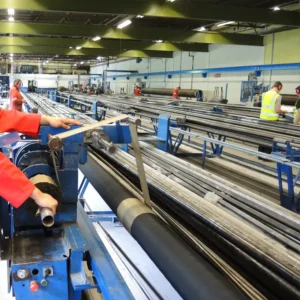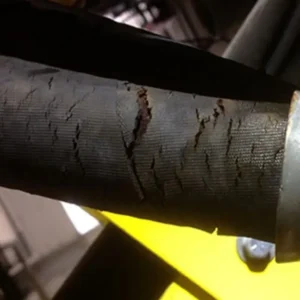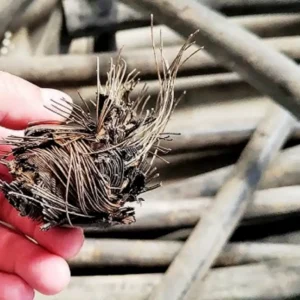Hydraulic systems are the backbone of countless industries, powering everything from construction equipment to manufacturing machinery. At the heart of these systems lies a crucial component: hydraulic hoses. These hoses are responsible for transporting pressurized fluid, enabling the smooth operation of hydraulic cylinders, motors, and other components.
A critical factor in the performance of hydraulic systems is flow rate. This metric measures the volume of fluid that passes through a hose per unit of time. A well-designed hydraulic system requires precise flow rate control to ensure optimal efficiency, productivity, and longevity.
In this blog post, we’ll delve into the intricacies of hydraulic hose flow rate, exploring:
- What is hydraulic hose flow rate?
- Why is flow rate important?
- Factors affecting flow rate
- How to measure and control flow rate
By understanding these key aspects, you can make informed decisions to enhance the performance and reliability of your hydraulic systems.
What is the Hydraulic Hose Flow Rate
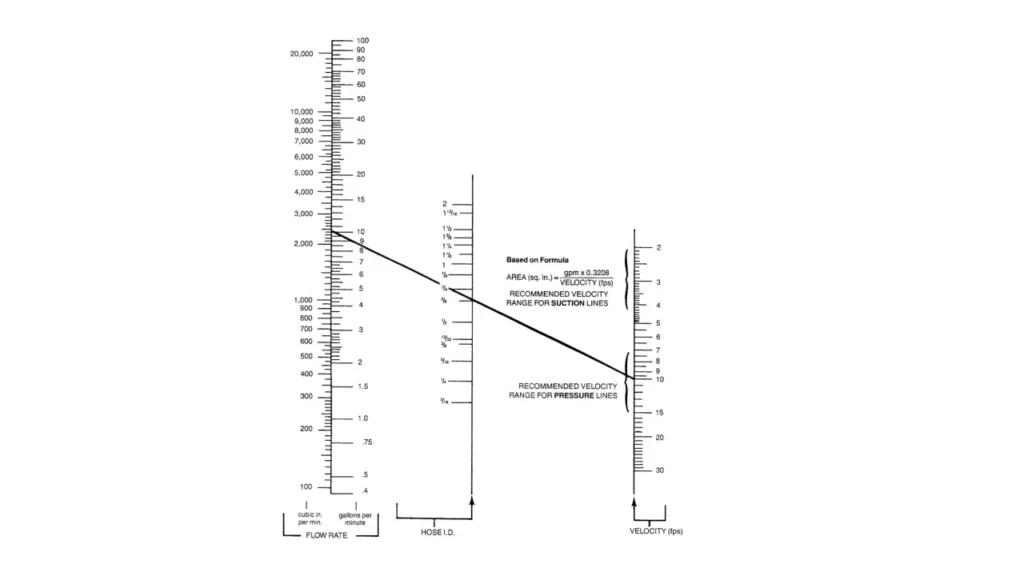
Hydraulic hose flow rate refers to the volume of hydraulic fluid that passes through a hose in a specific amount of time. It’s a critical factor in determining the performance and efficiency of a hydraulic system.
Factors Affecting Hydraulic Hose Flow Rate
Several factors influence the flow rate of a hydraulic hose:
- A larger diameter hose can accommodate a higher flow rate.
- A smaller diameter will restrict flow and increase pressure drop.
Fluid Viscosity:
- Thicker fluids (higher viscosity) flow more slowly than thinner fluids.
- Temperature can significantly affect fluid viscosity.
System Pressure:
- Higher pressure can increase flow rate, but it’s essential to consider the hose’s pressure rating.
- Excessive pressure can lead to hose failure.
Hydraulic Hose Length:
- Longer hoses can increase frictional losses, reducing flow rate.
- Friction losses can also lead to increased heat generation.
Fluid Velocity:
- High fluid velocity can cause turbulence, leading to increased pressure drop and energy loss.
- It’s important to maintain optimal flow velocity to avoid these issues.
Hydraulic Hose Material:
- The material of the hose can affect its flow characteristics.
- Some materials may have higher resistance to flow than others.
Hydraulic Hose Bends and Fittings:
- Sharp bends and fittings can create additional flow restrictions.
- Smooth bends and fittings can minimize these losses.
By carefully considering these factors and selecting the appropriate hose size and material, you can optimize the performance and efficiency of your hydraulic system.
Hydraulic Hose Size Flow Chart
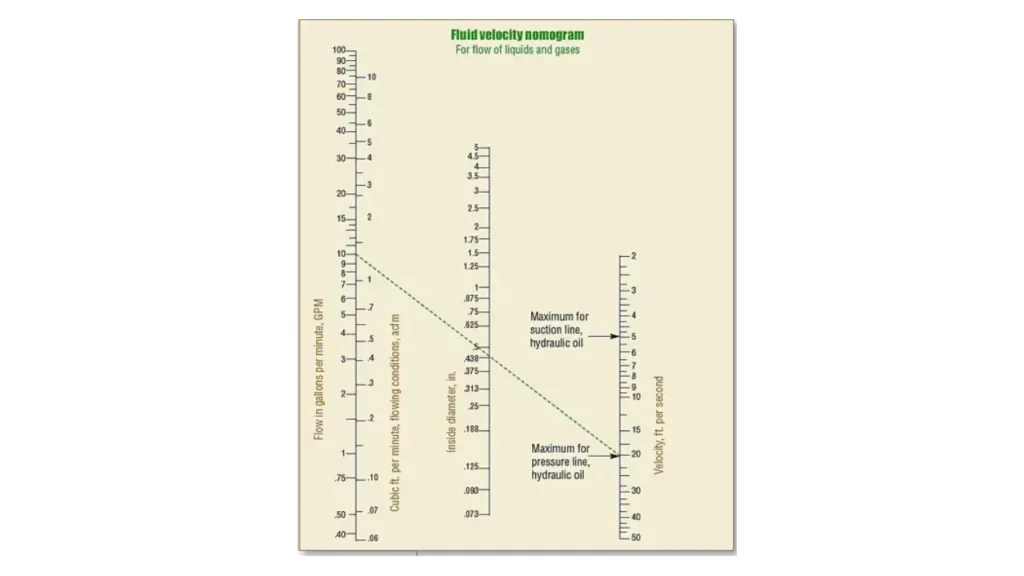
A hydraulic hose size flow chart, often referred to as a nomograph, is a visual tool used to determine the appropriate hose size based on the required flow rate and desired fluid velocity. It typically consists of three scales:
- Flow Rate: This scale represents the volume of fluid flowing through the hose per unit of time, usually measured in gallons per minute (GPM) or liters per minute (LPM).
- Hydraulic Hose Size: This scale indicates the inner diameter of the hose, often expressed in inches or millimeters.
- Fluid Velocity: This scale represents the speed at which the fluid is moving through the hose, measured in feet per second (FPS) or meters per second (m/s).
Approximate Flow Rates for Common Hydraulic Hose Sizes
Disclaimer: Actual flow rates can vary based on factors like fluid viscosity, system pressure, and hose length. This table provides a general estimate for typical hydraulic applications.
| Hydraulic Hose Size (in) | Approximate Flow Rate (GPM) |
|---|---|
| 1/2 hydraulic hose flow rate | 10-15 |
| 3/4 hydraulic hose flow rate | 20-30 |
| 3/8 hydraulic hose flow rate | 5-10 |
Note: For more precise calculations and specific applications, it’s recommended to consult hydraulic engineering resources or use specialized software tools.
Why the Variation?
- Fluid Viscosity: Thicker fluids, like hydraulic oil, will flow slower than thinner fluids.
- System Pressure: Higher pressure can increase flow rate, but it’s important to consider the hose’s pressure rating.
- Hose Length: Longer hoses can increase frictional losses, reducing flow rate.
- Bends and Fittings: These can create additional flow restrictions.
How to Use a Hydraulic Hose Size Flow Chart:
Identify Your Requirements:
- Determine the required flow rate of your hydraulic system.
- Specify the desired fluid velocity. Higher velocities can lead to increased pressure drop and turbulence, so it’s important to balance flow rate and velocity.
Locate the Points on the Chart:
- Find the flow rate on the flow rate scale.
- Locate the desired fluid velocity on the velocity scale.
Draw a Line:
- Using a straight edge, draw a line connecting the points representing the flow rate and velocity.
Read the Hydraulic Hose Size:
- The point where the line intersects the hose size scale indicates the recommended hose size for your application.
Key Considerations:
- Pressure Rating: Ensure the selected hose can withstand the maximum system pressure.
- Temperature Range: Choose a hose that can operate within the expected temperature range of the fluid.
- Fluid Compatibility: Select a hose material that is compatible with the fluid being used.
- Bending Radius: Consider the minimum bending radius of the hose to avoid damage.
- Installation: Proper installation, including minimizing bends and using appropriate fittings, is crucial.
Note: While a nomograph can provide a quick estimate, it’s always advisable to consult with hydraulic experts or refer to specific manufacturer‘s guidelines for precise calculations and recommendations.
If you need a specific flow chart or have further questions, please provide more details about your hydraulic system, such as the fluid type, pressure, and desired flow rate.
Hydraulic Hose Flow Rate Calculator
Before we delve into the calculation, it’s crucial to grasp the fundamental factors influencing hydraulic hose flow rate:
- Hose Diameter: A larger diameter allows for higher flow rates.
- Fluid Viscosity: Thicker fluids flow slower than thinner ones.
- System Pressure: Higher pressure can increase flow rate, but it’s important to consider the hose’s pressure rating.
- Hose Length: Longer hoses can increase frictional losses, reducing flow rate.
The Formula
While a precise calculation often requires specific hydraulic system data and fluid properties, a simplified formula can provide a general estimate:
Flow Rate (GPM) = (π/4) × (Diameter²) × Velocity
Where:
- GPM: Gallons per minute
- π: Pi (approximately 3.14159)
- Diameter: Inner diameter of the hose in inches
- Velocity: Fluid velocity in feet per second
Using Online Calculators
For more accurate calculations, consider using online tools provided by hydraulic component manufacturers or engineering software. These tools often incorporate additional factors like fluid viscosity, pressure drop, and hose material to provide more precise results.
Important Considerations
- Hose Material: Different hose materials have varying flow characteristics.
- Bends and Fittings: These can significantly impact flow rate, especially with sharp bends.
- Fluid Contamination: Contaminants can increase fluid viscosity and reduce flow rate.
- Temperature: Temperature affects fluid viscosity, which in turn affects flow rate.
Remember:
While these calculations and online tools can provide valuable insights, it’s always recommended to consult with hydraulic experts or refer to specific manufacturer‘s guidelines for precise calculations tailored to your specific application.
Would you like to use a specific online calculator or do you have a particular hydraulic system in mind that you’d like to calculate the flow rate for?
Flow Capacity of Hydraulic Hose
The flow capacity of a hydraulic hose, often measured in gallons per minute (GPM) or liters per minute (LPM), is determined by several factors:
- Hose Diameter: A larger diameter hose can accommodate a higher flow rate.
- Fluid Viscosity: Thicker fluids (higher viscosity) flow more slowly than thinner fluids.
- System Pressure: Higher pressure can increase flow rate, but it’s essential to consider the hose’s pressure rating.
- Hose Length: Longer hoses can increase frictional losses, reducing flow rate.
- Bends and Fittings: These can create additional flow restrictions.
Factors Affecting Flow Capacity:
- Fluid Velocity: High fluid velocity can cause turbulence, leading to increased pressure drop and energy loss.
- Hose Material: Different hose materials have varying flow characteristics.
- Fluid Contamination: Contaminants can increase fluid viscosity and reduce flow rate.
- Temperature: Temperature affects fluid viscosity, which in turn affects flow rate.
Calculating Flow Capacity:
While a simplified formula can provide a general estimate, for accurate calculations, it’s best to use online tools or consult with hydraulic experts. These tools often incorporate additional factors like fluid viscosity, pressure drop, and hose material to provide more precise results.
Online Calculators:
- Gates Fluid Flow Pressure Calculator: https://www.gates.com/us/en/knowledge-center/calculators/fluid-flow-pressure-calculator.html
- Copley Developments Flow Rate Calculator: https://www.copely.com/tools/flow-rate-calculator/
- OneHydraulics Line Sizing Calculator: https://www.onehydraulics.com/pages/hydraulic-line-sizing-calculator-page
Important Considerations:
- Hose Selection: Choose a hose with a suitable diameter and pressure rating for your specific application.
- Installation: Proper installation, including minimizing bends and using appropriate fittings, is crucial.
- Maintenance: Regular maintenance, including cleaning and inspection, can help maintain optimal flow capacity.
By carefully considering these factors and selecting the appropriate hose, you can ensure the efficient and reliable operation of your hydraulic system.
Conclusion
Understanding the hydraulic hose flow rate is crucial for optimizing the performance and efficiency of your hydraulic systems. By carefully considering factors like hose diameter, fluid viscosity, and pressure, you can select the right hose for your specific application.
Ready to upgrade your hydraulic systems with high-quality, high-performance hydraulic hoses?
Contact us today to explore our extensive range of wholesale hydraulic hoses. Our expert team is dedicated to providing you with the best products and services to meet your unique needs.
Don’t compromise on performance. Choose [Your Company Name] for all your hydraulic hose requirements.

